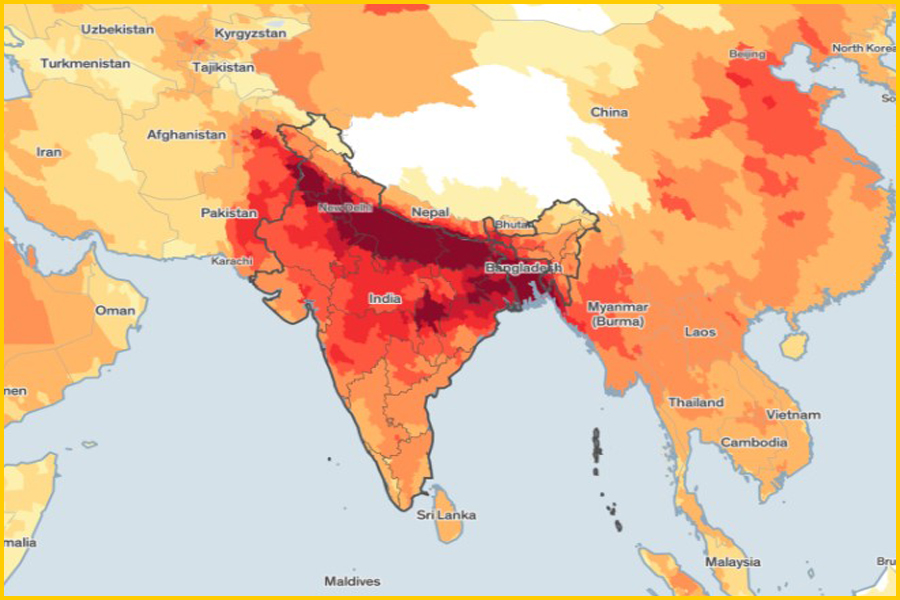In recent years, the phrase “AQI near me” has become a digital lifeline for millions across India. As air pollution continues to impact public health and urban living, the Air Quality Index (AQI) has emerged as a vital tool for awareness and action. From Delhi’s recent improvement to alarming spikes in smaller cities, the AQI reflects both progress and persistent challenges. This blog explores eight key dimensions of India’s air quality landscape in July 2025, offering insights into trends, health impacts, civic responses, and technological solutions. Let’s decode the air we breathe-and what it means for our future.
What Is AQI and Why It Matters
The Air Quality Index (AQI) is a standardized measure used to communicate how polluted the air currently is or how polluted it is forecast to become. It considers multiple pollutants-PM2.5, PM10, NO₂, SO₂, CO, O₃, NH₃, and Pb-and converts their concentrations into a single number ranging from 0 to 500. The lower the number, the cleaner the air. AQI categories range from “Good” (0–50) to “Hazardous” (401–500), each with specific health advisories.
In India, AQI is monitored by the Central Pollution Control Board (CPCB) and local agencies. With rising urbanization and vehicular emissions, AQI has become a daily concern for citizens, especially in metro cities. It influences decisions from morning walks to school closures. Understanding AQI empowers individuals to take precautions and demand accountability from policymakers. In essence, AQI is not just a number-it’s a mirror to our environmental health.
July 2025 AQI Trends Across India
July 2025 has shown a mixed bag of AQI readings across India. Delhi-NCR recorded its cleanest July in a decade, with an average AQI of 67-classified as “Satisfactory”. Stations like Punjabi Bagh and Bawana reported AQIs as low as 50, falling into the “Good” category. This improvement is attributed to sustained civic efforts, including landfill cleanups and intensified road sweeping.
However, cities like Agartala (AQI 226) and Saharsa (AQI 219) still struggle with “Poor” to “Very Poor” air quality. Monsoon rains have helped reduce particulate matter in northern regions, but industrial zones and traffic-heavy areas continue to face pollution spikes. The disparity highlights the need for region-specific strategies. While Delhi celebrates progress, other cities remain vulnerable. These trends underscore the importance of real-time monitoring and localized interventions. AQI is no longer a seasonal concern-it’s a year-round metric of urban resilience.
Health Impacts of Poor AQI
Poor air quality has far-reaching health consequences. Exposure to high AQI levels-especially PM2.5 and PM10-can lead to respiratory issues, cardiovascular diseases, and even neurological disorders. Children, the elderly, and individuals with pre-existing conditions are most vulnerable. Studies link prolonged exposure to polluted air with increased risks of asthma, lung cancer, and stroke.
In July 2025, cities with AQI above 200 reported spikes in hospital admissions for respiratory distress. Even short-term exposure can cause headaches, fatigue, and eye irritation. The psychological toll is also significant, with anxiety rising among urban dwellers constantly checking AQI apps. Masks and air purifiers offer temporary relief, but long-term solutions require systemic change. Public awareness campaigns and school-based education on AQI can empower communities to take preventive measures. Clean air is not a luxury-it’s a basic right. Addressing AQI is not just about pollution control; it’s about safeguarding public health.
Civic and Governmental Responses
Governmental and civic responses to AQI challenges have intensified in 2025. Delhi’s Environment Minister credited the improvement in air quality to coordinated efforts across departments. Initiatives include daily garbage removal (over 10,000 metric tonnes), construction waste management, and legacy landfill cleanups. Water sprinkling on roads and dust suppression technologies have also been scaled up. The “Viksit Delhi Mission” emphasizes outcome-based governance and citizen participation.
Other cities are adopting similar models, though implementation varies. Public-private partnerships are emerging, with startups offering air monitoring solutions. However, budget constraints and bureaucratic delays hinder progress in smaller towns. Civic engagement-through apps, citizen reports, and local activism is crucial. The success of AQI management depends on transparency, accountability, and sustained action. Governments must move beyond seasonal fixes to long-term environmental planning. Clean air should be a policy priority, not a reactive measure.
Role of Technology in AQI Monitoring
Technology plays a pivotal role in AQI monitoring and public awareness. Platforms like AQI.in offer real-time data, personalized health advice, and predictive analytics. Mobile apps allow users to check AQI “near me” instantly, receive alerts, and plan outdoor activities accordingly. IoT-enabled sensors are being deployed in schools, offices, and public spaces to track indoor air quality. Drones and satellite imaging help identify pollution hotspots and track emission sources.
AI models analyze historical data to forecast pollution trends and suggest mitigation strategies. In July 2025, Delhi used smart dashboards to coordinate civic actions and monitor landfill operations. Technology also enables citizen science-individuals can contribute data using portable monitors. However, digital literacy and access remain barriers in rural areas. Bridging this gap is essential for inclusive air quality management. Tech is not just a tool-it’s a catalyst for environmental accountability.
Public Awareness and Behavioral Shifts
Public awareness around AQI has grown significantly. Searches for “AQI near me” have surged, reflecting heightened concern. People now check AQI before morning walks, school runs, or travel plans. Social media amplifies alerts and shares pollution visuals, fostering collective consciousness. In July 2025, Delhi residents praised civic efforts while demanding sustained action. Behavioral shifts include increased use of masks, air purifiers, and green commuting options.
Schools are integrating AQI education into curricula, and workplaces are adopting indoor air monitoring. However, awareness is uneven-rural areas and smaller towns lag behind. Misinformation also persists, with myths about pollution remedies circulating online. Effective communication-through infographics, local languages, and community outreachi is key. Awareness must translate into action: voting for green policies, reducing emissions, and holding authorities accountable. Clean air begins with informed citizens.
Long-Term Solutions and Policy Recommendations
Long-term solutions to AQI challenges require systemic change. Policy recommendations include stricter emission norms, expansion of public transport, and promotion of electric vehicles. Urban planning must prioritize green spaces and reduce congestion. Industrial zones need pollution control audits and cleaner technologies. Waste management reforms-especially landfill bio-mining-can curb particulate emissions.
In July 2025, Delhi’s success was attributed to multi-agency coordination and sustained civic action. Replicating this model across cities is essential. National programs like NCAP (National Clean Air Programme) must be fully funded and transparently executed. Citizen participation-through feedback platforms and local monitoring-is vital. Incentives for green buildings, rooftop solar, and rainwater harvesting can complement AQI goals. Air quality should be integrated into climate policy, health planning, and education. The future of AQI lies in holistic governance not isolated interventions.
Conclusion: Breathing Hope into the Future The story of AQI in July 2025 is one of contrasts-progress in some cities, persistent challenges in others. Delhi’s cleanest July in a decade offers hope, while spikes in Agartala and Saharsa remind us of the road ahead. AQI is more than a number-it’s a reflection of our collective choices. Technology, civic action, and public awareness are converging to reshape India’s air quality narrative. But lasting change requires commitment-from policymakers, industries, and citizens alike. Clean air is not just an environmental goal-it’s a social imperative. As we move forward, let’s ensure that “AQI near me” becomes a reassuring check, not a daily alarm. The air we breathe should nourish, not harm. Let’s breathe hope into our future-one clean breath at a time.
ALSO READ-Empowering India’s Workforce: A Deep Dive into PM Vishwakarma and Skill India Schemes
Disclaimer: The articles, videos, and news published and shared on Theconnect24.com covering topics such as religion, astrology, health, yoga, history, mythology, and others are intended solely for general informational purposes. These materials are sourced from various references, and Theconnect24.com does not guarantee or verify their accuracy, completeness, or authenticity. Viewers are strongly advised to seek guidance from qualified experts or specialists before practicing, following, or experimenting with any information related to astrology, health, or similar subjects. This content is presented purely for the interest of viewers and does not carry any scientific validation or evidence.



